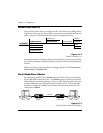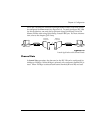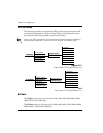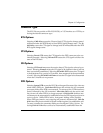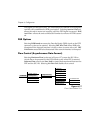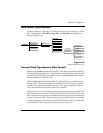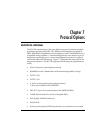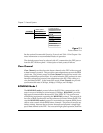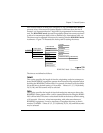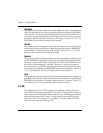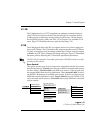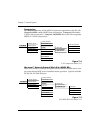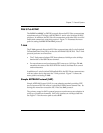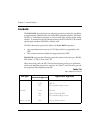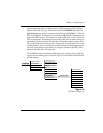
Chapter 7. Protocol Options
48 ISU 128 User Manual 61202.029L2-1
Figure 7-1
Protocol Menu Tree
See the section Recommended Operating Protocols and Table 1-B in Chapter 1 for
more information on recommended modes of operation.
The desired protocol may be selected with AT commands at the DTE port or
from the ISU 128 front panel. A description of each protocol follows.
Clear Channel
Clear Channel provides the entire bearer channel to the DTE without regard
to data format or protocol. This provides a rate adaptation at or near the ISDN
circuit rate. The primary usage for Clear Channel in the dial line mode is for
56 kbps and 64 kbps synchronous. It is useful when the DTE performs its own
internal synchronous protocol/rate adaptation or the ISU 128 is calling a 4-
wire Switched 56 DSU. In the leased line mode, Clear Channel can provide
synchronous bit rates of 56 kbps, 64 kbps, 112 kbps, and 128 kbps.
BONDING Mode 1
The BONDING mode 1 protocol allows the ISU 128 to communicate at bit
rates in excess of 64 kbps to a maximum of 128 kbps. BONDING provides
high-speed communication between ISU 128s, ISDN TE/TAs, and inverse
multiplexing equipment supporting the BONDING protocol. The protocol al-
lows use of both synchronous and asynchronous bit rates. When the ISU 128
uses the BONDING mode 1 protocol, it must make two separate ISDN phone
calls to seize control of both ISDN bearer channels. The protocol corrects any
delays existing between the two bearer channels and presents a single high
speed data channel to the DTE. For successful high-speed operation, both the
3=CONFIG
1=Netw. options
2=DTE options
3=Protocol
4=Quick setup
5=Remote config
1=Clear Channel
2=BONDING mode 1
3=V.120
4=V.34
5=V.110
6=DSU 57.6 ASYNC
7=T-LINK
8=SAP
9=FALLBACK
0=PPP asyn-sync



